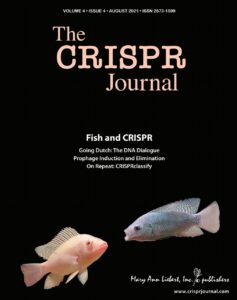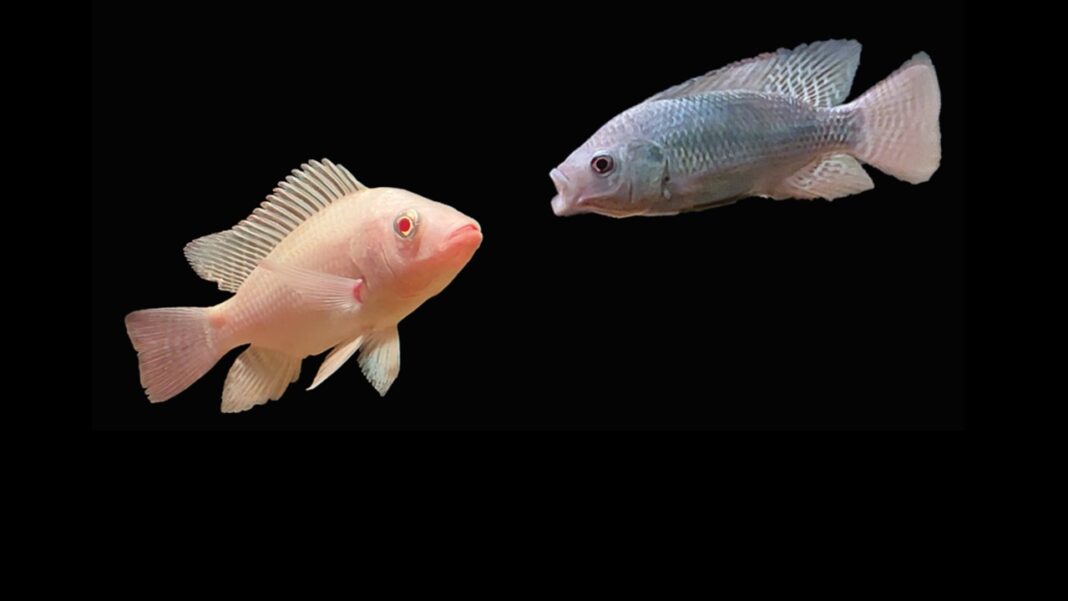
Scientists at Israel’s Agricultural Research Organization (ARO), Volcani Center in Rishon Lezion, have used CRISPR-Cas9 genome editing tools to create a new strain of tilapia that does not develop suspicious blotches on their skin and instead acquires appealing, uniform, red skins that drive up their commercial value.
The work is reported today in the cover article in the August 2021 issue of The CRISPR Journal, titled “Genome editing using CRISPR-Cas9 system to generate a solid-red germlines of Nile tilapia (Oreochromis niloticus).”
“These findings suggest that genome editing is useful for the generation of improved and traceable phenocopies of commercially popular traits,” said Jakob Biran, PhD, research scientist in the animal science, poultry, and aquaculture unit at ARO, and senior author of the study.
“While most of the genome editing community aims to generate novel phenotypes, we demonstrate the subtle use of the CRISPR-Cas9 approach to induce small genomic indels, which result in a robust phenotype with high commercial value in an edible fish.”
As populations around the world continue to grow, so too does the demand for food. Aquaculture cultivates fresh and saltwater organisms under controlled conditions, thereby providing sustainable sources of food. The Nile tilapia is one of the top five aquaculture fishes worldwide.
Originally grey, hybrid strains of red Nile tilapia are popular, increasing their market value. Unfortunately, the red color in Nile tilapia is unstable in most natural strains. Arising from developmental defects in cells containing the brown pigment melanin (melanophores), these fish develop red and black blotches that mar their appearance, sending their market prices plummeting.
The Israeli researchers create a stable, knockout tilapia strain that carries heritable genomic insertions and deletions (indels) in a gene called slc45a2 (solute carrier family 45 member 2) to generate the albino variant with red skin and eyes. They accomplished this using CRISPR-Cas9 editing in multiplex genome editing.
“This work demonstrates the generation of somatic and germline slc45a2 mutant alleles, which leads to complete albinism in Nile tilapia,” the authors noted.
The Slc45a2 gene, which is conserved from fishes to humans, encodes a membrane transport protein needed to produce melanin. Biran’s group designed and microinjected specific guide RNAs for the slc45a2 sequence into one-celled Nile tilapia embryos, inducing the loss of melanin in the skin and eyes in 97–99% cases.
They sequenced the injected fish embryos to confirm all injected embryos carry the mutated alleles of the slc45a2 gene with “variable degrees of mutagenesis efficiencies.” By sequencing the gene in clippings of the fins, in sperm, and in first-generation offspring, the authors established the germline transmission of the mutant alleles.
The authors also demonstrated the use of high-resolution melt (HRM) curve analysis for high-throughput phenotypic screening of heterozygous offspring that carry one mutant allele of the gene but looked like their wild siblings. HRM allowed Biran’s team to identify heterozygotes that could then be crossbred to generate albino-red tilapia strains where both alleles of slc45a2 gene are mutated in the germline.
The work was funded by a grant from the Ministry of Agriculture and Rural Development, Israel.






